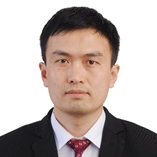Smart Materials Based Vibration Control and Structural Resilience in Building
A special issue of Buildings (ISSN 2075-5309). This special issue belongs to the section "Building Materials, and Repair & Renovation".
Deadline for manuscript submissions: closed (15 July 2023) | Viewed by 4706
Special Issue Editors
Interests: smart materials in civil engineering; self-centering structures; seismic resilience; structural vibration control; prefabricated concrete structures; structural health monitoring
Interests: shape memory alloy; self-centering; earthquake engineering; resilience
Special Issues, Collections and Topics in MDPI journals
Interests: piezoelectric material; structural vibration control; shape memory alloy; seismic resilience; seismic analysis; smart base-isolation structure
Interests: integrated modular construction; seismic design of steel structure; prefabricated steel structure; seismic resilience of engineering structures
Special Issues, Collections and Topics in MDPI journals
Special Issue Information
Dear Colleagues,
It is our great honor to invite you to contribute to the Special Issue entitled “Smart Materials Based Vibration Control and Structural Resilience”. Earthquake-induced disaster is one of the most disastrous hazards worldwide. Numerous buildings, bridges, and pipelines are destroyed every year due to strong seismic motions, and rapid recovery of function of infrastructure is quite challenging due to post-earthquake damage. This is particularly critical for lifeline engineering such as medical facilities, highways, railways, and communication facilities. Consequently, vibration control and structural toughness have become research hotspots in recent years. Smart materials such as shape memory alloy (SMA), magneto-rheological (MR) material, and piezoceramic-based aggregates have provided pioneering opportunities for structural toughness and recoverability.
This Special Issue focuses on the cutting-edge research progress in smart-materials-based vibration control and structural toughness. The topics of this Special Issue include development of smart material, damper, energy dissipation devices, toughness-based design methods, and so on. Recent innovations in smart materials and their applications in earthquake engineering are particularly encouraged. Original contributions concerning the following research topics are welcome, including but not limited to:
- Development of smart materials in seismic design;
- Recent innovations in dampers, isolation bearings, and energy dissipation components;
- Research progress in self-centering structures, including components, connections, and structural systems;
- Development of resilience-based design methodology;
- Resilience enhancement strategies based on smart materials;
- Recent innovations in vibration control of engineering structures based on smart materials;
- Health monitoring of building structures using smart materials.
Prof. Dr. Hui Qian
Prof. Dr. Canxing Qiu
Prof. Dr. Dahai Zhao
Dr. Enfeng Deng
Guest Editors
Manuscript Submission Information
Manuscripts should be submitted online at www.mdpi.com by registering and logging in to this website. Once you are registered, click here to go to the submission form. Manuscripts can be submitted until the deadline. All submissions that pass pre-check are peer-reviewed. Accepted papers will be published continuously in the journal (as soon as accepted) and will be listed together on the special issue website. Research articles, review articles as well as short communications are invited. For planned papers, a title and short abstract (about 100 words) can be sent to the Editorial Office for announcement on this website.
Submitted manuscripts should not have been published previously, nor be under consideration for publication elsewhere (except conference proceedings papers). All manuscripts are thoroughly refereed through a single-blind peer-review process. A guide for authors and other relevant information for submission of manuscripts is available on the Instructions for Authors page. Buildings is an international peer-reviewed open access monthly journal published by MDPI.
Please visit the Instructions for Authors page before submitting a manuscript. The Article Processing Charge (APC) for publication in this open access journal is 2600 CHF (Swiss Francs). Submitted papers should be well formatted and use good English. Authors may use MDPI's English editing service prior to publication or during author revisions.
Keywords
- smart materials
- structural vibration control
- seismic mitigation
- resilience-based design method
- self-centering structures
- resilience enhancement
- base isolation








